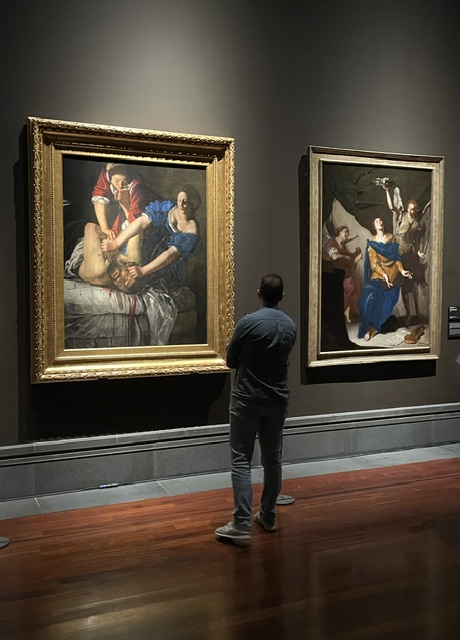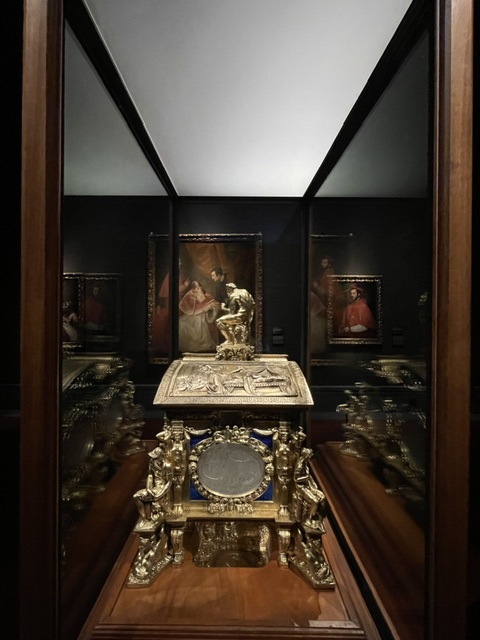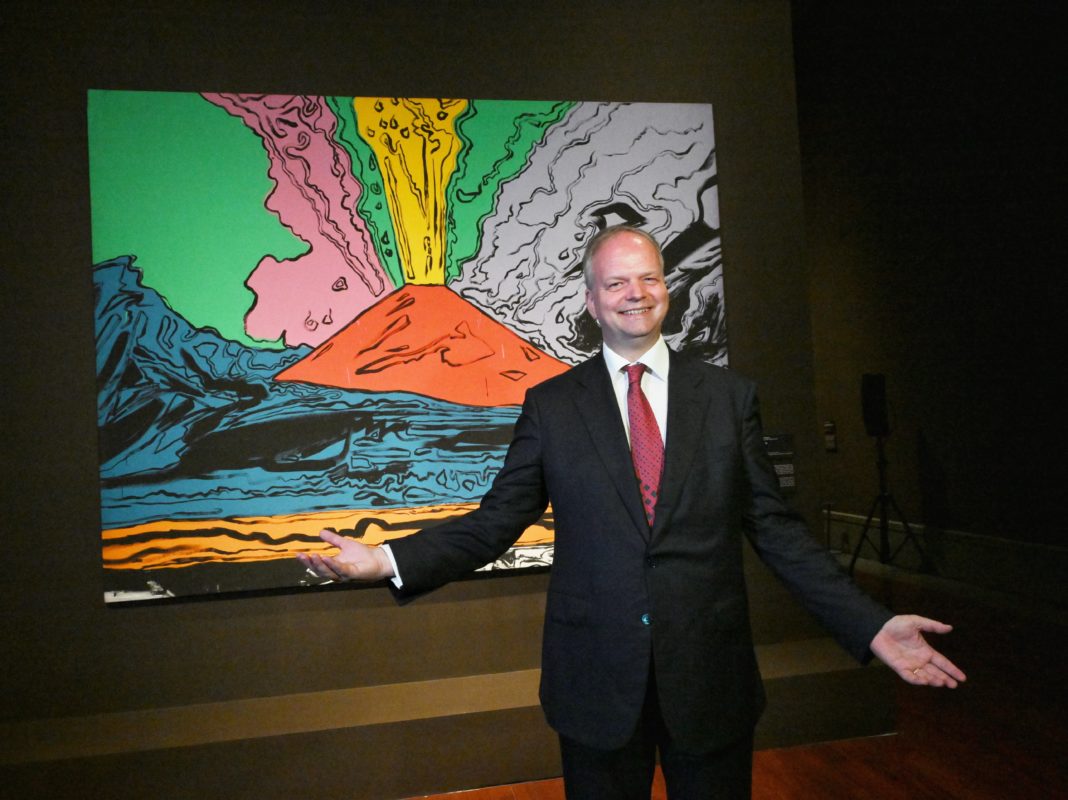Maestoso e paterno, il celebre soprintendente Raffaello Causa che aveva fama internazionale. Francese, innamorato di Napoli, Sylvain Bellenger. Tedesco col cuore italiano, Eike Schmidt. Ieri mattina ha fatto il suo ingresso da protagonista bersagliato da telefonini e telecamere.
Lui, dopo l’esperienza agli Uffizi da direttore e quella elettorale in corsa come primo cittadino di Firenze, è (ri)atterrato definitivamente (conservando pure il domicilio fiorentino) alla guida di Capodimonte, deciso a rilanciarlo nei prossimi otto anni per portare a compimento il masterplan lanciato dalla precedente direzione.
Sguardo al futuro, radicato in un passato luminoso. Ce la farà, promette, a mandare in porto i lavori nel bosco, l’efficientamento energetico, la casa della fotografia dedicata a Mimmo Jodice, l’allestimento contemporaneo con la galleria di Lia Rumma.
Anche lui, come Bellenger (ma un po’ più formale) mostra l’orgoglio del padrone di casa, in una pinacoteca che è tra le più belle al mondo. Una fierezza manifestata presentando il nuovo allestimento di 18 dei capolavori rientrati in sede, dopo le mostre al Louvre e in Piemonte.
Diciotto stelle che brillano in quella che è la sala 62 del secondo piano, degli arazzi raffiguranti la battaglia di Pavia, adesso in giro per il pianeta (prima tappa la California, con San Francisco).
Questi dipinti resteranno esposti nella fascinosa luce che è loro riservata, incantando il pubblico, durante i lavori cui sarà sottoposto il museo. Domina, tra loro, La Flagellazione (1607) di Caravaggio, ancora più potente in questa isola di bellezza. Ma c’è anche il Vesuvius (1985) di Andy Warhol, la scintillante cassetta farnese in argento dorato e cristallo di rocca, nonché l’enigmatico Ercole al bivio dipinto da Annibale Carracci (1596). E ancora, giusto, per citarne qualche altro, il ritratto di papa Polo III e la Danae dipinti da Tiziano, Giuditta decapita Oloferne(1593) nelle suggestive pennellate di Artemisia Gentileschi.
Adesso che sono tornati i magnifici quadri si sente rassicurato Schmidt, dopo il calo di pubblico registrato per la loro assenza. E invita i napoletani, e ugualmente i turisti, a visitarli tutto l’anno come fanno durante le domeniche gratuite: «Non siamo mica sul Monte Bianco. I trasporti esistono, per esempio la metropolitana dei Colli Aminei».
A chi tra i giornalisti gli fa notare che Bellenger era di tutt’altro avviso e che caldeggiava l’idea di rendere stabile una navetta dal centro alla ex residenza borbonica risponde che probabilmente partirà dalla prossima primavera, dopo i colloqui avuti con il sindaco ma che intanto i bus ci sono.
Quindi, va oltre, delineando che l’obiettivo è quello di oltrepassare la soglia dei 200mila ingressi raggiunti qualche anno fa (2004, 2005,2017 e 2019, subito prima del Covid). Una scommessa identitaria per un patrimonio napoletano che appartiene al mondo.
Per saperne di più
https://capodimonte.cultura.gov.it/

Welcome back, masterpieces: 18 paintings in a new exhibition after the Paris and Piedmont shows. There is also Vesuvius after Warhol

Majestic and fatherly, the internationally renowned Superintendent Raffaello Causa. French and in love with Naples, Sylvain Bellenger. German with an Italian heart, Eike Schmidt. Yesterday morning he appeared as the protagonist, surrounded by mobile phones and cameras.
After his experience as director of the Uffizi and his election as first citizen of Florence, he has (re)landed definitively at the Capodimonte (while maintaining his Florentine residence), determined to relaunch it in the next eight years to complete the master plan launched by the previous director.
Looking to the future, rooted in a glorious past. He promises that he will be able to complete the work in the woods, the energy efficiency, the house of photography dedicated to Mimmo Jodice and the contemporary layout with Lia Rumma’s gallery.
Like Bellenger (but a little more formal), he is also proud of having one of the most beautiful galleries in the world. A pride that manifests itself in the presentation of the new exhibition of 18 masterpieces that have returned to the gallery after exhibitions in the Louvre and in Piedmont.
Eighteen stars shine in room 62 on the second floor, the tapestries depicting the Battle of Pavia, which are now touring the world (first stop California, with San Francisco).
Eighteen stars shine in room 62 on the second floor, tapestries depicting the Battle of Pavia, which are now touring the world (first stop California, with San Francisco).
These paintings will remain on display in the fascinating light reserved for them, enchanting the public during the works that the museum will undergo. Among them, Caravaggio’s The Flagellation (1607) dominates, even more powerful in this island of beauty. But there is also Andy Warhol’s Vesuvius (1985), the glittering Farnese Box in gilded silver and rock crystal, and the enigmatic Hercules at the Crossroads by Annibale Carracci (1596). And again, to name but a few, the portrait of Pope Pole III and Danae by Titian, Judith Beheading Holofernes (1593) in the evocative brushstrokes of Artemisia Gentileschi.
Now that the splendid paintings are back, Schmidt feels reassured, after the drop in visitors recorded during their absence. And he invites Neapolitans, and tourists too, to visit them all year round, as they do on free Sundays: “It’s not like we are on Mont Blanc. There are means of transport, such as the Colli Aminei metro”.
To those journalists who point out that Bellenger had a completely different opinion and that he had advocated the idea of a permanent shuttle bus from the centre to the former Bourbon residence, he replies that it will probably start next spring, after talks with the mayor, but that in the meantime the buses are there.
He then goes on to say that the aim is to exceed the 200,000 threshold reached a few years ago (2004, 2005, 2017 and 2019, just before Covid). A bet on identity for a Neapolitan heritage that belongs to the world.
Read more at
https://capodimonte.cultura.gov.it/










